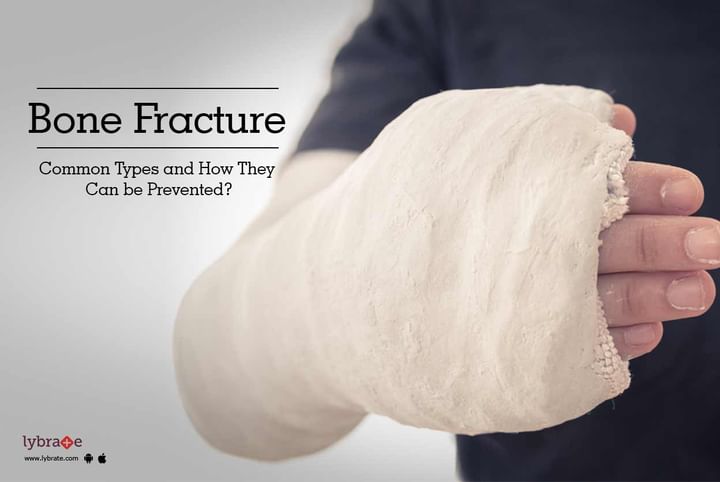Bone Fracture - Common Types and How They Can be Prevented?
The human body allows for movement through the complex system of bones, muscles and joints. A break in the bone is medically known as a fracture and can be caused by constant stress, pressure or impact. It is common knowledge that with age, the bone strength decreases and incidence of fractures (osteoporotic fracture) increases. Based on the affected bone and impact, different types of fractures are commonly identified as:
- Complete: When the breakage of the bone is complete, producing two or more pieces, it is referred to as a complete fracture.
- Incomplete: When the breakage is incomplete, where the bone has cracked, but does not break into pieces, it is known as an incomplete fracture.
- Another type would be the open or closed fracture:
- Open fracture: When the skin is exposed and the bone breaks through this exposed skin, it is known as compound or open fracture.
- Simple or closed fracture: The bone breaks, but the skin continuity is maintained. Again, here are different types including hairline, greenstick, oblique, etc.
What is the reason behind a fracture?
A bone will fracture when force is applied to it that is stronger than the bone itself. A key factor in a bone’s susceptibility to fracturing is age. Both children and older people are prone to bone fractures. Children’s bones are constantly growing and have not reached their full strength. Elderly people have brittle bones with old age and are prone to develop bone diseases, making them susceptible to fractures.
How they are treated?
Splint and pain medications are commonly used. Closed reduction where the fracture is reduced without opening up the tissues and open reduction, where the tissues are opened up are common approaches to managing fractures.
Can they be prevented?
Especially with children and in the elderly, extra precaution should be taken to avoid any kind of injury and fracture.
- Develop an exercise routine to strengthen the muscles
- Manage weight
- Use the right footwear and exercise gear
- Watch your medications (avoid sleep inducing ones)
- Increase lighting in the room/home to improve clarity of vision for elderly
- Make the home/living area fall-proof by reducing clutter, using railing in the bathroom and bedrRhinoplastyoom, using rubber mat, etc.
- While a fall may seem inevitable, taking the above steps can help reduce the incidence and severity of a fall, thereby minimizing damage. If you wish to discuss any specific problem, you can consult an orthopedist.



+1.svg)
